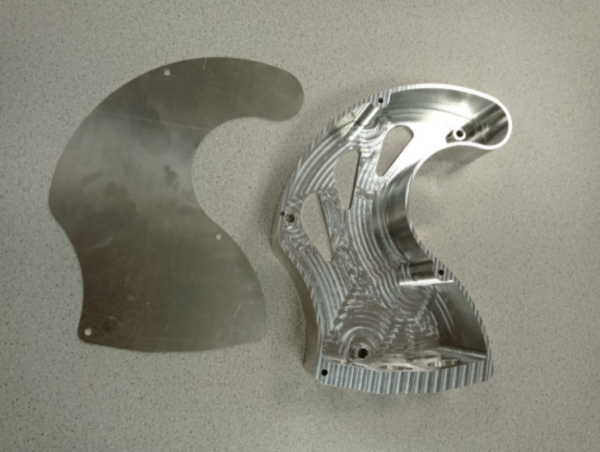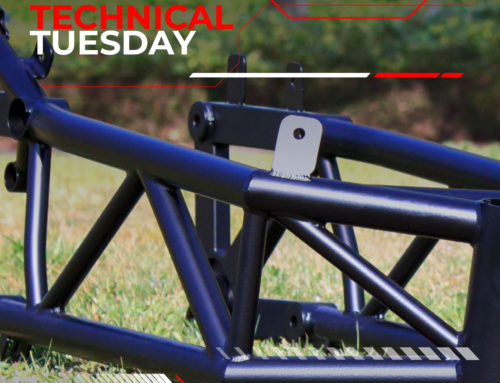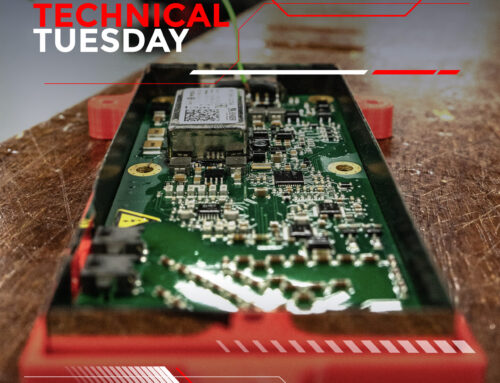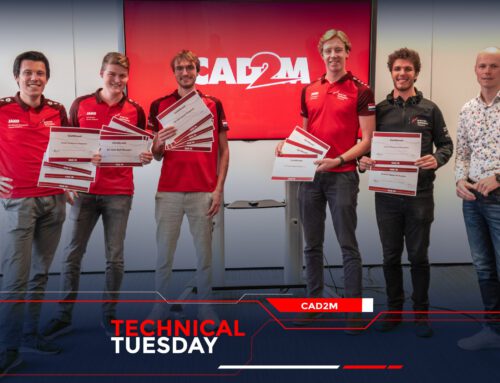The connection box is a housing component for the electromotor high voltage cables. This housing is attached directly to one of the motor’s lids from the outside shielding the high voltage cables from external damage. The initial prototypes for the connection box were 3D printed with thermoplastic in order to get an optimized design as well as for testing potential materials. Yet, the main requirement for the connection box this year was for it to be manufactured using metal.
Having this requirement, a list of manufacturing processes was compared, such as metal 3D printing, casting and CNC milling. Due to the feasibility of the design and keeping costs in mind, the connection box was designed for CNC milling. For this process in particular several considerations need to be taken into account. For instance, the radius size of the fillets, which are limited to a minimum size of 4.5mm due to the CNC machine capabilities. Also, the diameter size of the cable holes, since 6 out of 9 needed to be threaded with a tap. Completing design for manufacturing, the final concept design was taken to the Hangar at the University of Twente for machining. The team of technicians at the Hangar aided the team in discussing the feasibility for manufacturing and design feedback. At the end, the connection box was CNC milled with Aluminum 7075. And not only the connection box itself was required to be of metal but also the rest of the component in the assembly. Thus, manufacturing the top lid with laser cutting out of sheet metal. As well as properly selecting the cable connectors from our partner Helukabel.

So why exactly did the connection box was required to be manufactured out of metal? The main purpose of effective electromagnetic compatibility shielding is to prevent electromagnetic interference (EMI) from impactive sensitive electronics. This is achieved by using a metallic screen to absorb the electromagnetic interference that is being transmitted through the air. The shield effect is based on a principle used in a Faraday cage – the metallic screen completely surrounds either the sensitive electronics or the transmitting electronics. The screen absorbs the transmitted signals, and caused a current within the body of the screen. This current is absorbed by a ground connection or a virtual ground plane.
Yet, to avoid electromagnetic interference as much possible and for safety reasons, we also need to shield the high voltage cables from one another when assembled inside the connection box. For this, a separate component was designed to function as a cable guide to shield the cables from touching each other as well as from touching the lid and connection box. Since this component wasn’t required to be manufactured out of metal, it was 3D printed at the Future Factory.
With this new connection box, the team can perform tests to the electric superbike in a safer way due to the proper shielding of the high voltage cables.
– Mariana Hernandez





